








Introducing MAGGI® Gluten-Free Supreme Gravy Mix, the secret weapon that transforms your dishes and takes them to the next level.

This full-bodied, beef-flavoured gravy mix is not only vegan but also gluten-free, making it a star performer for a wide range of culinary creations. Whether it’s a classic roast dinner, grilled meats, or innovative plant-based dishes, MAGGI® Supreme Gravy Mix is the go-to solution for adding intense flavour and richness to any recipe.
PERFECT PARIING
Matched for both beef and roasted vegetables, this versatile gravy mix is ideal for elevating the taste of a variety of dishes.
GLUTEN-FREE CERTIFICATION
Endorsed by Coeliac Australia & NZ, MAGGI® Supreme Gravy Mix ensures that your customers with specific dietary requirements can enjoy its rich flavours without worry.
BULK VERSATILITY
Available in convenient 2kg and 7kg formats, this bulk gravy mix is designed for easy preparation and serving on demand. It’s bain-marie stable and freeze-thaw stable, making it a practical choice for busy kitchen environments.
MAGGI® Gravy range prides itself on being the perfect partner for any culinary need, offering versatile blends that cater to every occasion. This simple, consistent, and rich gravy adds a delicious meaty flavour to dishes—whether it’s the classic appeal of grilled meats or the innovative twist of plant-based alternatives—ensuring customers keep coming back for more. In the fast-paced environment of a bustling kitchen, finding the right MVP to meet all your customers’ demands is essential. That’s where MAGGI® Supreme Gravy Mix shines: rich, flavourful, gluten-free, and vegan, it’s the ultimate solution for superior culinary experiences and consistently excellent results. With MAGGI®, you’re not just meeting expectations; you’re exceeding them.

Caitlan Mitchell Editor-in-Chief caitlan@reviewmags.com
entilation isn’t something your patrons should notice — they only do when it’s done poorly. But in hospitality, it’s a critical part of running a successful venue. From managing heat and odours in the kitchen to keeping dining areas comfortable and compliant, good ventilation impacts nearly every part of the operation. In this issue, we’re putting ventilation in the spotlight. It’s a subject that often

gets pushed down the priority list during fit-outs or renovations, but the cost of getting it wrong can be significant. We’ve spoken to industry leaders in ventilation who have seen first-hand how poor planning, tight budgets, or lack of maintenance can create long-term headaches for venues.
In commercial kitchens,
extraction systems do the heavy lifting. However, not all setups are created equal, and in older buildings or high-density areas, installing the right system can become a complex puzzle of consent requirements, fan types, ducting routes, and noise control.
Equally important is the maintenance that comes after installation. Ventilation
is not a ‘set and forget’ investment. Without regular servicing and checks, even the best-designed systems can fall short over time.
This issue is a timely reminder that while furniture, menu design, and branding all play their part in setting the tone, the less visible systems — like airflow — keep a venue functioning day to day. As the industry continues to evolve and rebuild, investing in the right infrastructure isn’t just smart; it’s essential. Our expert insights in this edition help put ventilation back on the agenda — not just as a compliance box to tick but as a core part of your venue’s success.




































Uber Eats is supporting restaurants across New Zealand to shift towards more sustainable packaging, unveiling a practical, science-backed Green Packaging framework to help partners make informed decisions.
To accelerate this transition, Uber Eats has committed up to NZD 10 million over the next two years in funding to help restaurants in New Zealand and Australia switch to more sustainable packaging through programs and subsidies.
Adapted in partnership with circular economy researchers at the University of Auckland’s CIRCUIT Research Centre and tailored to New Zealand’s waste and recycling systems, the framework provides practical guidance on which packaging materials can be recycled, composted or reused, helping restaurants navigate alternative packaging options. Read more online

Hospitality operators in Tauranga and Mount Maunganui have labelled cost increases as unfair amid new council regulations.
The Tauranga City Council has introduced new local regulations that will impose on-street dining fees for all cafes, bars and restaurants in the Tauranga and Mount Maunganui region. Many local operators have voiced their opposition, stating it as an unfair move, especially as so many are already struggling to keep their doors open.
On 24 March 2025, Mayor Mahe Drysdale and councillors voted to introduce a flat fee of NZD 100 per square metre (plus GST) per annum for all four alfresco zones.
Read more online

Hospitality New Zealand (Hospitality NZ) is pleased that Hon Kieran McAnulty’s member’s bill proposing to remove trading restrictions over Easter weekend, Christmas and ANZAC Day passed its First Reading last night and will be debated at Select Committee.
Sale and Supply of Alcohol (Sales on Anzac Day Morning, Good Friday, Easter Sunday, and Christmas Day) Amendment Bill looks to clarify trading and service restrictions across the four restricted trading days in the calendar year.
Hospitality NZ believes the restricted trading day rules as they stand are not fit for purpose. For instance, the Easter Holiday weekend comprises of four days of trade, each with a completely different set of rules as to how hospitality can trade.
Furthermore, some councils have different rules leading to a patchwork of Easter Trading restrictions across the country. Councils are not able to tailor ANZAC or Christmas Day trading for their regions. Read more online









Come to a relaxed, no-obligation gathering to meet some of the friendly OneMusic team and ask any burning questions about playing music in a public setting at your business.
Feel free to bring along a friend or colleagueCoffees are on us!
• 10.30am, Tuesday 6 May, 2025
• Tides Bar & Eatery, 66 Trafalgar Street, Nelson
• To RSVP, please fill out this form by Wed 30 April. https://forms.office.com/r/GfzwjUajMr

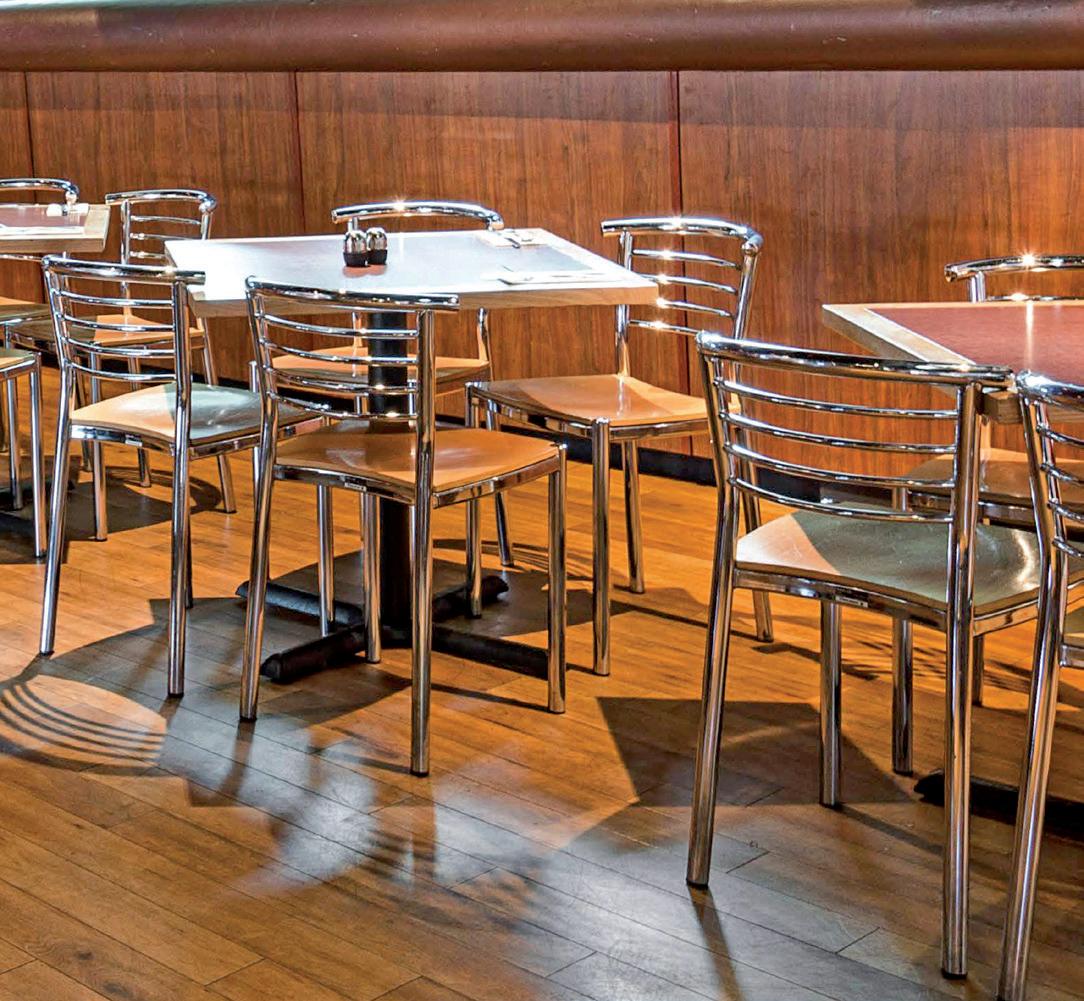
Hospitality New Zealand (Hospitality NZ) is pleased that Hon Kieran McAnulty’s member’s bill proposing to remove trading restrictions over Easter weekend, Christmas and ANZAC Day passed its First Reading last night and will be debated at Select Committee.
Sale and Supply of Alcohol (Sales on Anzac Day Morning, Good Friday, Easter Sunday, and Christmas Day) Amendment Bill looks to clarify trading and service restrictions across the four restricted trading days in the calendar year. Read more online

Replaces a table’s existing screw-in feet
Stabilises tables with a press of the table top
Internal locks provide unrivalled stability
Enables the alignment of table tops
Independently tested by FIRA

Exceeds - international standards for Stability, Strength, Durability & Safety (BS EN 581-1:2006 & BS EN 581-3:2017)
Install in seconds. No tools required
Saves you time, money and frustration while improving your customers’ experience

New Zealand's leading alcohol-free beverage brand, Free AF, made its Coachella debut this month through an exciting partnership with LA-based non-alcoholic retailer
The New Bar.
Boasting headline acts including Lady Gaga, Green Day, Post Malone, and Travis Scott, over 250,000 festivalgoers will now be able to sip on Free AF's premium range of alcohol-free cocktails at The New Bar, Coachella’s exclusively non-alc bars on site.
While festivals have traditionally been synonymous with alcohol, the non-alcoholic landscape has been rapidly gaining momentum, with festivals like Coachella responding. Read more online
AUSTRALIA | Disappointment throughout the Australian wine industry has taken aim at the Government, calling for more support.
Australian Grape & Wine has expressed deep disappointment at the Albanese Government’s failure to deliver meaningful support to the grape and wine industry in the 2025-26 Federal Budget, describing it as a second major missed opportunity in as many years.
“This Budget is another blow for growers and winemakers across Australia,” said Chief Executive Lee McLean. Read more online



Menumaster delivers speed, efficiency, strength, and durability – which is why it is the microwave oven of choice for fast food chains, service stations, supermarkets, convenience stores, cafés and restaurants. Comprising a complete range of commercial microwave and accelerated microwave, convection, infra-red ovens designed to meet the needs of the most demanding hot food serving environments.





In the bustle of a cafe kitchen, where heat, smoke and steam are part of daily life, it’s easy to forget the toll that poor ventilation can take on the people who keep the food flowing.
At Hoodmaster, staff wellbeing is not considered an afterthought - it is central to how a kitchen should be designed,” said Dave Bottom, Owner of Hoodmaster.
Inadequate commercial kitchen ventilation is not just uncomfortable - it can be dangerous. Headaches, respiratory issues, slips caused by greasy floors, and fatigue due to poor air quality are all too common in kitchens where extraction systems are underperforming.
In addition to the health risks of poor lighting or improper combustion of cooking fuels, the message is clear: good ventilation is not a luxury - it is a responsibility.
That is where Hoodmaster comes in.
The New Zealand-based manufacturer
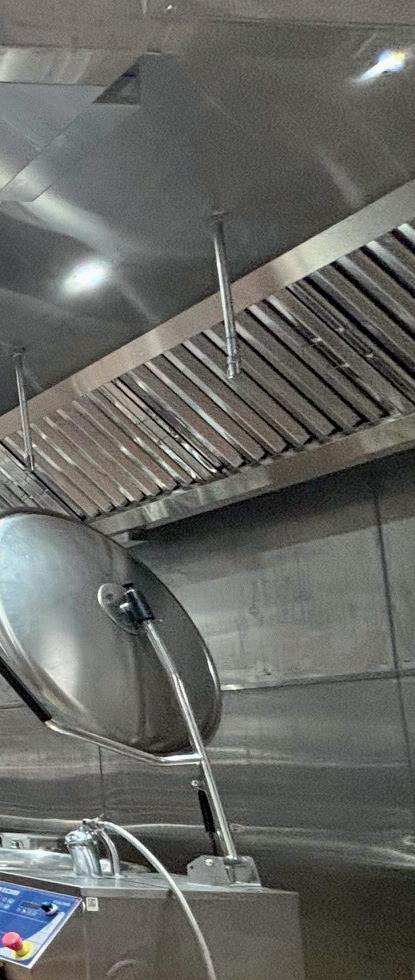
specialises in low-velocity commercial kitchen range hoods engineered with a strong focus on health and safety.
Its systems don’t just meet compliance requirements; they exceed standards like NZBC G4, AS1668, and the European heavyweights DW172 and VDI2052.
What does that mean for café owners? Better capture of smoke, grease and heat. A cooler, safer kitchen. Happier staff. Fewer sick days. And fewer accidents.
One of the most overlooked elements of kitchen ventilation is mechanical return air. Extraction alone is not enough - the air must come back somewhere. Poorly designed return air systems can create cold draughts or upset airflow balance. Done well, as with Hoodmaster’s induction


technology, return air makes extraction more effective and energy-efficient.
“Our induction systems use smart airflow dynamics to direct air where needed — improving fume capture without blowing cold air onto staff or cooking surfaces,” said Dave.
“It’s comfort and performance working together.”
While Hoodmaster’s systems perform exceptionally in cafés and restaurants, the company also caters to largerscale operations such as convention centres and production kitchens. These environments require more robust solutions.
Hoodmaster delivers with peripheral filtration systems, front-and-back grease filters, and advanced spark-safe baffle technology — ideal for high-volume cooking and solid fuel appliances.
The company is more than just a box-maker; it’s a kitchen environment specialist.
Hoodmaster hoods are:
• More efficient (30 to 50 percent more than AS1668 designs)
• Cleaner with UL-1046 stainless steel baffle filters
• Smarter, using thermal convection methods to guide airflow
• Safer, reducing risks of slips, fumes and fire
• Built locally by a team with global experience
So, next time you step into a kitchen and notice the calm, clean air around you, it might just be a Hoodmaster hood at work.




A good ventilation system in hospitality is as vital as a reliable chef and just as easy to overlook when it is working well. When it is not, kitchens become uncomfortable, food quality can suffer, and fire risks increase.

At Southern Hospitality, the Mechanical ventilation team continues to see the same avoidable mistakes in kitchens across New Zealand. One of the most frequent is underspecifying the extraction system. As menus change and kitchens scale up, the fan and ducting often stay the same. What worked for a light breakfast offering may not cope with fried, grilled, or wok-heavy cooking. Another issue is hood design. If the canopy is too small, poorly placed, or mounted too high, it cannot effectively capture steam, grease, and heat. Even the best equipment will underperform if the fundamentals are not in place. Equally important is how air is replaced once it is extracted. A large number of kitchens are missing mechanical return air. Without this, the space becomes negatively pressurised. That pulls in air from places it should not come from, such as bathrooms or loading areas, and reduces the performance of the system. Staff comfort drops, extraction becomes less
effective, and odours start to linger.
Regulations add another layer of complexity. Council rules often require building consent for changes to ducting, especially where fire-rated walls or roofs are involved. Operators must also be careful about where extracted air is discharged. It cannot be directed onto neighbouring buildings or walkways, and systems must meet fire safety criteria based on the kitchen layout and equipment.
General Manager for Manufacturing at Southern Hospitality, Vaughan Muller, said their team works with operators from early planning stages to final installation.
“We help kitchens navigate the requirements and avoid making costly errors. It is about understanding how the kitchen works and designing the system to support that.”
Solid fuel appliances, such as woodfired ovens or charcoal grills, require even more planning. These cannot be connected to standard extraction systems. They need separate flues
and high-temperature ducting. More frequent cleaning is essential, and fire safety clearances are often stricter. Urban locations may also have additional emission rules. Muller said the most successful operators involve ventilation specialists and fire engineers early to avoid problems later in the process.
Southern Hospitality supports customers well beyond the installation. Their preventative maintenance service helps reduce downtime, extend equipment life, and ensure systems run efficiently over time. The team includes former chefs and hospitality professionals across both islands, providing practical advice informed by hands-on experience.
“Mechanical Ventilation should be considered an essential part of kitchen planning, not an afterthought,” said Muller.
“When it is done properly, it protects staff, improves performance, and saves money in the long run.”
The goal is to create kitchens that function better every day, from airflow to workflow.

It’s simple. Great food starts with strong local connections. McCain has been supporting Kiwi communities for over 40 years, from the farmers who grow top-quality potatoes to the cafés, restaurants, and takeaway spots that serve them.
McCain fries start with the best-quality potatoes. Here in New Zealand, they’re grown by a group of over 12 local farmers who understand how to get the most from the land. From there, each fry is cut to the right length, with the right potato solids for a higher yield, and that signature golden colour and crisp texture.
But great fries don’t grow in isolation. Strong communities make great food possible, which is why we give back wherever we can.
Whether it’s raising money to help refill freezers and keep families fed during cyclone recovery or partnering with local charities and initiatives, we’re committed to supporting the people who support us.
Sustainability matters too. Because you can’t grow great produce without looking after the land. That’s why we’ve introduced a fourpart Sustainability Strategy, helping local businesses to keep serving up delicious food for years to come.
With McCain Foodservice Solutions, businesses can be confident they’re getting quality products, from one local to another.
mccainfoodservice.co.nz/grownlocallovedlocal




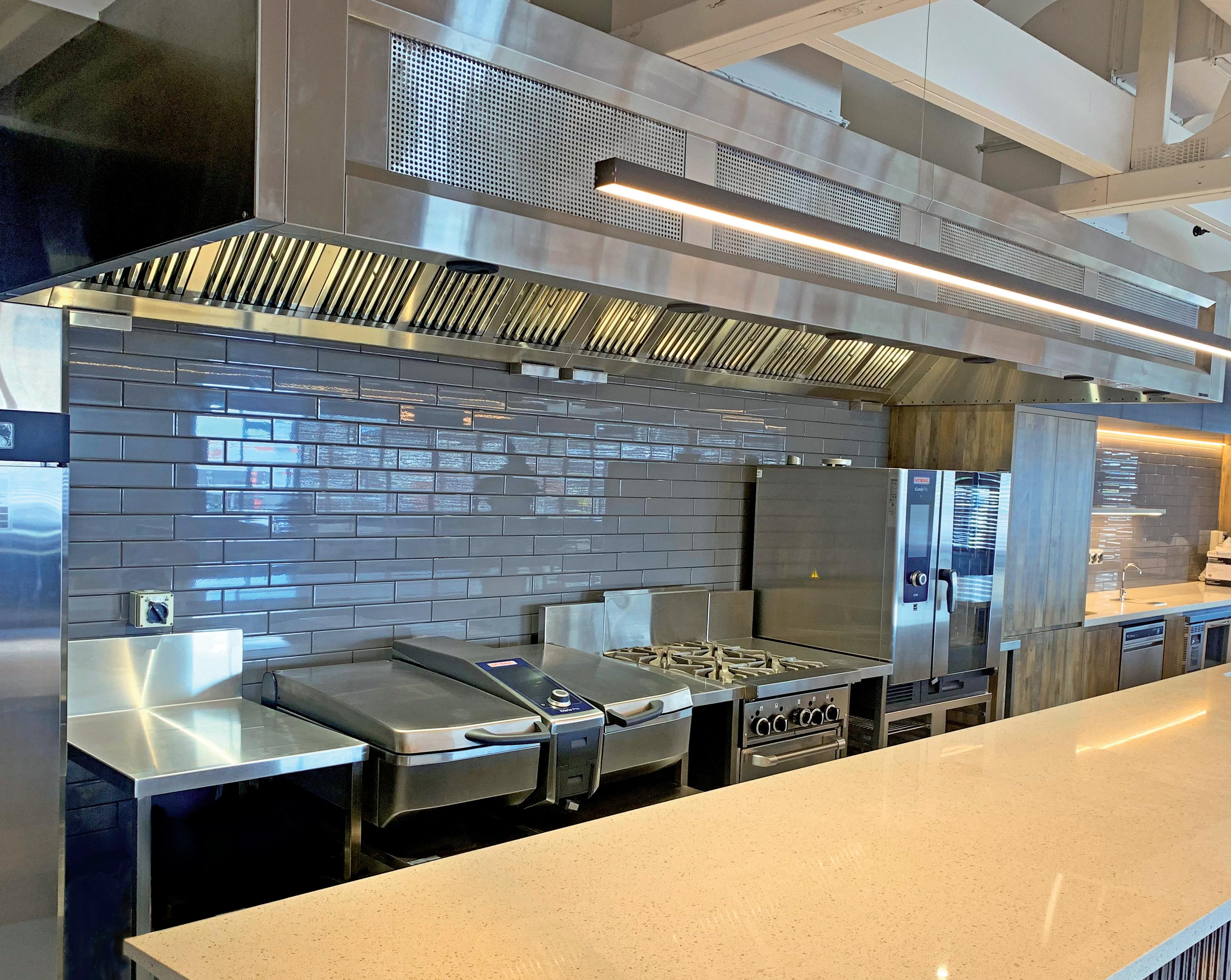
Built to perform, built to last, built for compliance. Exceptional Value • 100% New Zealand Made Greater Staff Wellbeing • For Even The Quietest Of Settings
Oceania Gas Safety is setting a new standard in commercial kitchen ventilation. Its gas interlock systems deliver compliance and peace of mind to hospitality operators across Australasia.

At the heart of the company’s offering is the CT1200S Gas Interlock Panel, a safety device designed to ensure that gas cannot flow unless ventilation systems function correctly. This crucial safeguard helps kitchens meet regulatory requirements and protects staff and customers.
The CT1200S is engineered with an intuitive interface, making it easy to install and operate. Monitoring airflow and gas supply in real time reduces the risk of downtime and supports greater efficiency in busy commercial kitchens. The system is already in use by several high-profile food service brands, reinforcing Oceania Gas Safety’s position as a trusted leader in the field.
In a recent New Zealand first, Oceania Gas Safety installed an ondemand kitchen ventilation system

for St. Pierre’s Sushi. The new system dynamically adjusts airflow based on cooking activity, lowering energy consumption and reducing operational costs. This move towards smarter, responsive ventilation marks a significant step forward in sustainable kitchen design.
Oceania Gas Safety’s products are distributed across Australasia through its partnership with All Controls, making innovative gas safety solutions widely accessible to the commercial hospitality sector.
For operators looking to improve kitchen safety and efficiency, Oceania Gas Safety continues to provide practical, energy-saving solutions tailored to modern commercial kitchens.

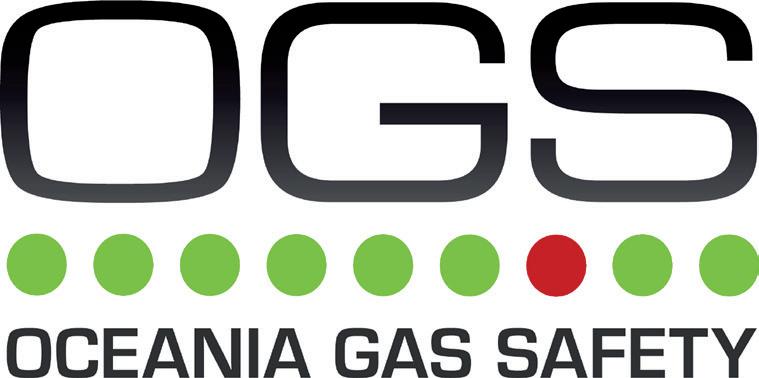






A well-specified ventilation system is fundamental to getting the design right for hospitality operators fitting out a cafe, restaurant, or production kitchen. From extraction hoods to return air systems, technical choices made early in the process can prevent costly retrofits and ongoing operational issues.
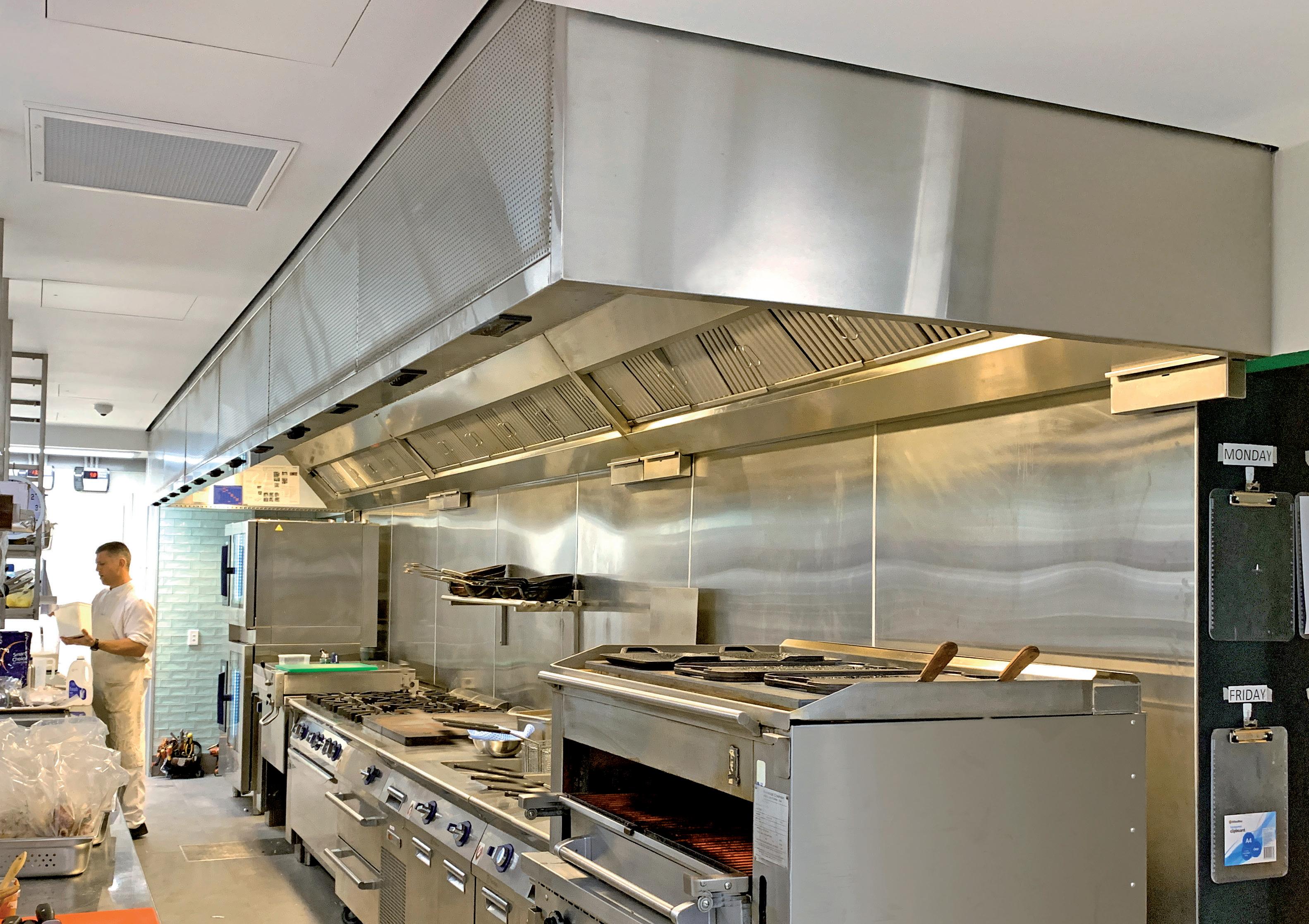
One of the most frequent design flaws is an undersized extraction hood.
“The overhang of the hood is frequently too small. The building code AS1668.2-2002 stipulates a 150 mm overhang, often, it is too little.
Unfortunately, this figure remains embedded in the minds of many architects, installers, contractors and operators, so it takes some convincing to go beyond it,” said John Macdonald, Senior Sales and Design Engineer at Stoddart NZ.
Later versions of the AS1668.2 standard recognise the need to adjust overhangs according to appliance type. A combi oven, for example, performs more effectively with a 400 mm overhang.
Another common oversight is inadequate capture and containment, the two principal functions of a welldesigned extraction hood. If the system cannot consistently capture and hold rising steam, smoke or grease, it compromises effectiveness and compliance.
“To capture properly, the hood must be large enough, particularly in terms
of overhang. Modern engineered hoods use air curtain systems to improve capture efficiency, requiring less exhaust air. They also offer greater interior volume to contain sudden bursts of steam, such as when a pot lid is lifted, something basic box hoods often struggle with,” said Macdonald.
Macdonald noted that compliance requirements are often misunderstood, especially during layout or equipment changes.
Any commercial kitchen with appliances exceeding a combined 8-kilowatt power rating, including a deep fat fryer, must be fitted with a compliant extraction system, regardless of how often those appliances are used.
“Even if a piece of equipment is only used occasionally, an inspector will still see it and assume it can run at full capacity. That’s enough to trigger the requirement for full extraction,” Macdonald explained.
While extraction systems tend to get the most attention, return air is equally important. Without a planned return path, airflow can become unbalanced, affecting system performance.
“What goes out must come in. An extract-only hood may be acceptable if
a kitchen opens to adjacent areas, such as a show kitchen or food court. But in a closed kitchen, mechanical supply air is necessary, ideally through diffusers in the hoods, delivering air directly to the chefs’ workspace,” said Macdonald.
Some fit-outs once relied on front doors for make-up air, a solution that caused more harm than good.
“If the doors opened outwards, they often became almost impossible to open when the extraction system was active,” he added.
Kitchens that use solid-fuel cooking appliances, such as wood-fired ovens or charcoal grills, require a different approach to ventilation system design.
“These systems are serious fire hazards and should always be managed by a reputable ventilation design company from the outset,” said Macdonald.
Solid fuel appliances must have a separate extraction system, including a dedicated hood, ductwork and fan. Additional fire safety measures are also essential.
“The best systems use features such as cold-mist sprays or spark-arresting filters to prevent embers or flames from reaching the ductwork,” he said.




When asked to comment on commercial kitchen extraction, it’s not exactly a topic that sparks immediate excitement. However, after nearly four decades in the HVAC industry, you tend to come across a wide variety of systems in all kinds of establishments.

Nigel Dunne INSTALLATION SITE MANAGER, THERMO TECH
Thermo Tech was established in 1992 as a family-owned and operated business, and over the years, we’ve become well-versed in what works and what doesn’t.
Kitchen extraction is just one of the many areas we handle when designing and installing new systems. Because we take a solutions-based approach, we’re often called in to fix issues that have existed from the beginning or have developed over time.
In my recent experience, the biggest influencing factor is cost. Setting up a commercial kitchen is a major investment, and extraction systems, especially large stainless-steel hoods, are often one of the last considerations in the budget.
Depending on the application, it can be extremely difficult to design and install a low-cost system that also works

efficiently. Common problems include incorrect fan types (such as whether to use VSD or EC setups), poor hood sizing and filtration, the quality of filters used, ducting routes, fan placement from a maintenance point of view, noise concerns in inner-city environments, and council consent requirements.
One of the most important aspects, and one that is frequently overlooked, is a proper maintenance schedule.
I was recently asked to inspect a system in a heritage building in the CBD. The restaurant on the ground level uses an old vertical shaft, a feature original to the building, to extract air up three floors to the roof. Residents in the building’s apartments were experiencing cooking smells in various areas.
After a thorough inspection, we discovered the shaft was never properly lined. The old, deteriorating brickwork
had developed gaps, allowing fumes to pass through. Addressing this now will be a costly process. Unfortunately, this is not an isolated situation.
Another system we inspected recently in an inner-city hotel was initially well designed. It included a secondary system that supplied fresh air to the perimeter of the hood, improving airflow. However, over time, due to a lack of regular maintenance, some components had been replaced with lower-spec parts, which compromised the system’s performance.
It may sound like a grim picture, but this is a classic example of how common it is to see a lack of preventative maintenance in our industry.
The bottom line when it comes to commercial kitchen extraction is to do your research and prioritise quality over budget.

Another system we inspected recently in an innercity hotel was initially well designed. It included a secondary system that supplied fresh air to the perimeter of the hood, improving airflow.






Base Woodfired Pizza has been a family-owned and operated business for nearly 15 years. Founded by Rod and Gill Thompson in Christchurch, the business has grown from being a humble pizza trailer serving events to a thriving chain of locations and a new headquarters set to be opened soon.

Its core range of ten pizzas include four vegan and the ever-popular Classic Cheese. General Manager, Matthew Johns said there is something for everyone.
“We love collaborating with local Canterbury food producers to craft unique monthly specials. For example, last month, we teamed up with Spicy Boys Hot Sauce for a Hot Honey Pepperoni pizza, and this month, we’re featuring a Bones Pickles Pickle Pizza,” said Johns.
He added that the top-selling pizza was the Sir George, which has become a Christchurch icon.
“This pizza, a favourite for over a decade, features BBQ sauce, 24hour pulled brisket, streaky bacon, Canterbury pepperoni, and red onion, finished with a smoky chipotle kick. It’s become a local institution, with over 30,000 sold each year.”
He said customisation was something that all customers appreciated and would scout out. This has been important to Base Woodfire Pizza’s ability to grow a strong and loyal customer base and ensure that every item on the menu is frequently ordered.
Johns added that pizza dough was just as important to customers as toppings.
“As our name suggests, we’re
always innovating with our dough, constantly refining it to elevate every pizza. Each base is hand-stretched before being fired in our wood ovens for that authentic touch. Another exciting change is our upgrade from generic shredded Anchor mozzarella to traditional cubed mozzarella, now featured across all our pizzas for a richer, more authentic flavour.”
Wedg Ave Woodfired began as a DIY hobby during the covid lockdowns, and has now turned into one of Auckland’s most popular food trucks. Founder Sach Kadam said customers are attracted to woodfired pizza because of its novelty. He said that there is something about live fire and cooking that grasps their attention.
He added that Margherita and the New Yorker Pepperoni were the most popular flavours, but customers had developed a taste for the recent addition of Italian Prosciutto with rocket and manuka honey.
By using the woodfire concept, extraction and ventilation were specifications Kadam took into consideration. While there were no particular requirements in terms of extraction, there was a need for the chimney’s width and length to have a good, natural draft. This is something he suggested would take a bit of science
and research to get right. He believed the right height for a chimney was two to three metres off the ground to keep smoke away.
Kadam added that in recent times, especially with cost pressures, food trucks have gained attention as they tend to be on the cheaper side in comparison with cafes and restaurants.
“The food truck market will always be cluttered, which means people will need to work hard on their product and present it well and consistently. Focusing on creating a brand through social media is also important.”
Kadam said that although specialising in woodfired pizza was a unique point of difference for most food trucks, it was difficult to acquire an oven that is of the right size and weight.
“The technology for wood hasn’t changed, frankly, for 100 years, and I suppose that’s the beauty of woodfired.”
Woodfired pizza has nestled into the menu landscape, from high-end establishments to QSR chains. Its permanent seasonality and point of difference from regular pizza offerings have secured its place as a unique way for vendors to offer a point of difference, explore flavour combinations and provide a smokey, rustic edge.




While pizza has never faded from culinary fashion, it has garnered the attention of upmarket eateries in recent years. From flavours to crusts, chefs have continually introduced innovative concepts of the humble pizza without losing the touch of Italian heritage.

For Auckland chef Rocco Pezzullo, pizza is all about tradition.
Pezzullo’s restaurant, Napoli Contemporanea, was named as one of the 50 Best Pizzerias in the Asia Pacific region.
“When I first got the email telling me that my restaurant has been nominated, I just couldn’t believe it,” he said.
He admitted that although he was surprised, he felt happy and proud that his hard work had been acknowledged in this way. He said it felt very surreal to be invited to the awards ceremony in Tokyo.
Part of his appeal to customer has been largely due to his menu, showcasing a range of authentic flavours from the south of Italy, specifically from Naples and Sicily. Exploring various types of meats, cheeses and specialty ingredients, Pezzullo’s menu is an homage to his cultural heritage. Standouts include fresh octopus with San Marzano tomatoes and black olives, and pistacchio mortadella served with fresh stracciatella and mozzarella.
All ingredients used on Pezzullo’s menu are imported from Italy, except vegetables. He said even minor touches like salt and pepper are shipped in. He was certain that his restaurant was one of the most authentic in the country.
His equipment is also strictly Italian. He believed this was the key to providing customers with the perfect, authentic taste and appreciation for his food.
For some restaurants, incorporating traditional flavours with seasonal ingredients has been a successful formula for pizza.
Ben Patton, Owner of Francesca’s Italian Kitchen in Christchurch, said his restaurant has a wide selection of pizzas available throughout the year, changing seasonally.
“Our restaurant is an authentic representation of traditional Italian flavours and dishes, using the best locally sourced fresh produce and imported specialty goods from Italy,” he said.
There is year-round demand for pizza, according to Patton, who said customer orders are usually evenly
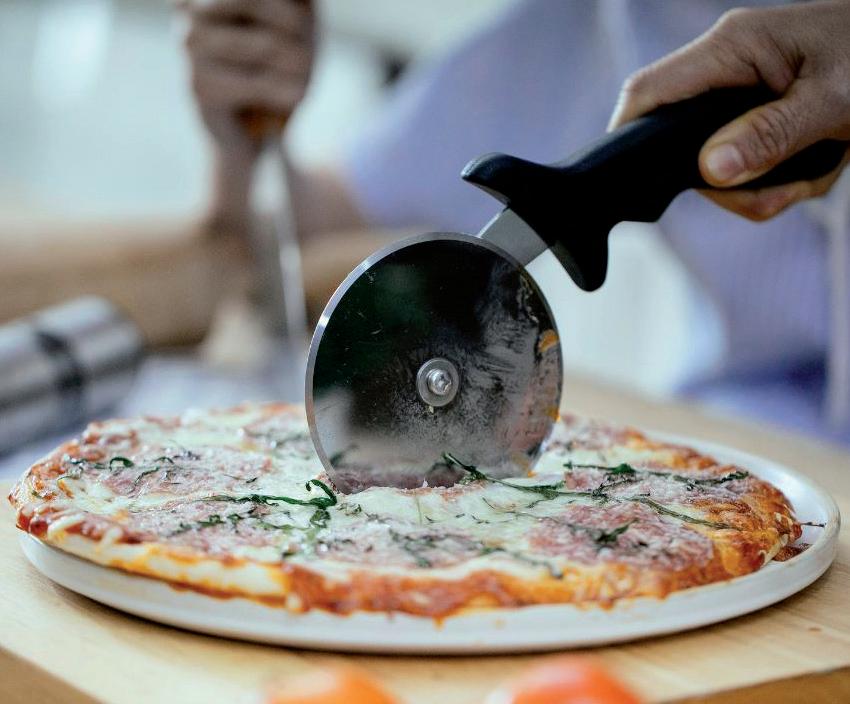
split between pizza and other mains. Keeping variety broad has also been just important. Patton added that unique flavour combinations have been very popular with customers.
“We have a great variety, including some lovely vegetarian options like our ortolana or our Pear and Gorgonzola pizza (dinner only), which adapts our extremely popular pear, gorgonzola and walnut salad into a delicious and fairly unique pizza topping.”
He said that appealing to customers by providing an inviting atmosphere was important to the restaurant and its menu.
“We are a family-owned and operated business, and we hope to provide a warm, friendly environment for people of all ages to come enjoy authentic Italian food.”
As demand for pizza continues to grow, offering upmarket and unique flavour combinations is a trend that will continue to shape how establishments craft their menus in order to stay on top of customer demand.





Far from his home town of Naples, Sergio Maglione is the chef and owner of Farina on Auckland’s Ponsonby Road.
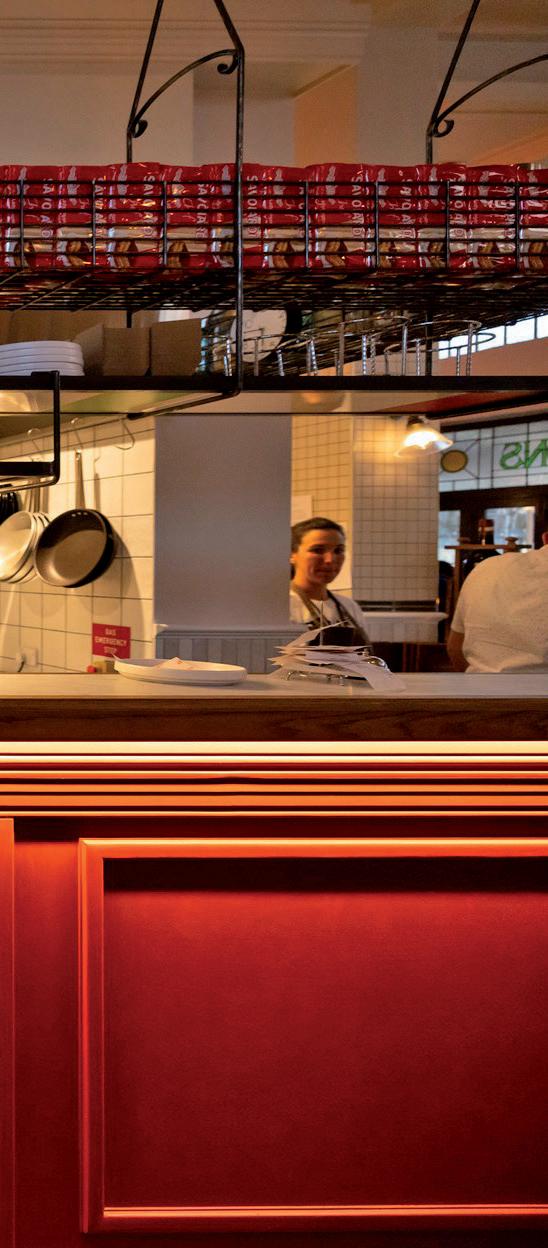

Sergio Maglione
CHEF & OWNER FARINA PONSONBY RD, AUCKLAND


Having grown up surrounded by a rich and vibrant culinary culture from an early age, Maglione moved to New Zealand in his 20s, where he worked for his uncle Antonio Crisci at Toto restaurant. In 1998, he was part of the opening team at Non Solo Pizza, something he considered a great milestone in his career.
Maglione has worked with many chefs over the years, but said it was important to never stop learning.
“Whether it’s from other people or through your own research, curiosity and passion are what keep you evolving,” he said.
Farina was established in 2014 with the aim of being a casual, vibrant pizza place that offered a wide range of street food from Naples and fresh pasta. Over the years, Farina has
evolved into more of a full restaurant experience, while retaining its strong roots in Neapolitan culture.
Maglione said that pizza was undoubtedly one of the most popular items on the menu, largely due to their Neapolitan style. Farina is a member of the AVPN (Associazione Verace Pizza Napoletana), which is dedicated to preserving and promoting authentic Neapolitan pizza-making skills and techniques.
“We’re proud to carry the Vera Pizza Napoletana brand, which certifies that our pizzas meet the strict international AVPN standards. We also run regular pizza-making courses, which have been very successful.”
Farina’s menu has continuously followed the seasons, something Maglione said was a way to keep things fresh and exciting.







“We work with what’s available and at its best, adapting sauces, flavours, and combinations to reflect the season while keeping customer favourites on the menu.”
The quality of ingredients is the foundation of every dish at Farina, according to Maglione. He said he has constantly reviewed and selected the best produce available, both locally and from Italy, in order to ensure consistency and authenticity in every dish.
As for the future, Maglione believed there would be continued momentum for trends that take cuisine back to its
origins. He said tradition, simplicity and authenticity were the backbones of quality dishes.
“These aren’t just trends; they’re timeless. I think people are looking for honest food that tells a story.”
The challenging climate of the local hospitality industry was an issue Maglione pointed out, but said the key was to understand the audience and get them to connect with the restaurant’s vision. He said that when this is achieved, restaurants are often at the top of their game. He hoped the local sector was able to continue adapting and innovating whilst staying
true to itself.
In his experience, hospitality has been a tough industry, but if chefs are able to let their emotions and passion guide their commitment, it can become very rewarding.
“It’s not just about food; it’s about people, stories, and shared experiences.”






The future of pizza in the QSR market will be driven by continued growth in convenience, digital innovation, and customer experience, according to Domino’s NZ General Manager Bek Hebden.

As consumer expectations evolve, Domino’s has witnessed a significant opportunity in areas like faster delivery times, enhanced digital ordering platforms, and new technology to create a more personalised and seamless customer experience.
Additionally, Domino’s has expected growth to come from product differentiation, capturing more eating occasions, and strengthening its digital presence.
Hebden said that, as a business, Domino’s has acknowledged the growing customer demand in New Zealand to buy and support local.
“We have responded to this need by sourcing quality, farm-fresh ingredients to inspire new items and limited-edition offerings where we can. These menu innovations not only delivered mouthwatering flavours but doubly satisfied by supporting local businesses and farms across New Zealand, resulting in unique menu items offered nowhere else in the world.”
An example of this is the Apricot Chicken pizza which has seasoned chicken, onion and capsicum, finished with an apricot sauce swirl and topped with spring onions, as well as the Funky Chicken pizza, a generous pizza with a crème fraiche base, seasoned chicken with red onion, mushroom, stretchy Mozzarella cheese, oregano and creamy mayonnaise. These menu items are
completely unique to Domino’s New Zealand and hero Kiwi-specific tastes and preferences.
When it comes to the most popular items on the menu, Hebden said without a doubt, Domino’s classics reign supreme. Pizzas like Pepperoni, Hawaiian, Beef and Onion and Cheesy Garlic are consistently popular within its customer base, with Garlic Bread being the most popular side.
Domino’s New Zealand has also tailored its offerings to actively cater to a wide range of dietary preferences, including vegetarian, plant-based, and gluten-free options. Hebden said this was an important factor in its appeal to customers.
“For example, we launched vegan cheese in response to a growing customer demand for plant-based options in 2018, and then shortly after in 2019, were the first QSR pizza business in ANZ to introduce plantbased beef, pepperoni and ham – which was very well received.”
By continually innovating to cater to its customers’ evolving tastes and needs, Hebden added that Domino’s was proud to offer something for everyone, no matter what the dietary requirements or preferences were.

Looking ahead, technology has helped Domino’s create faster, easier, and more personalised customer experiences. Whether it’s through AIpowered ordering prediction tools, GPS delivery tracking, smarter rostering, or frictionless digital ordering across multiple platforms, technology has unlocked new ways to meet customers where they are.
It has also played an important role behind the scenes, such as in store operations, marketing automation and assisting to make informed data-driven decisions. These are designed to help franchise partners run smarter, more efficient stores.
“Ultimately, technology is allowing Domino’s to stay ahead of changing customer expectations, improve the delivery experience and streamline store operations,” she said.
“We see an opportunity to continue growing our store network, particularly in existing regions where we know demand is strong, and in new, emerging locations where we can better serve customers.”
Hebden added that Domino’s growth strategy has been focused on building stores closer to customers to improve delivery times and ultimately provide a better, faster, and more convenient experience.
The chain has new stores in the pipeline across New Zealand, with a strong focus on smart, strategic growth that supports both franchise partners and customers.
“It’s about growing in the right way, and making sure Domino’s is the most loved pizza brand in every neighbourhood we serve.”


Shop the deals now
From 28 April to 25 May 2025








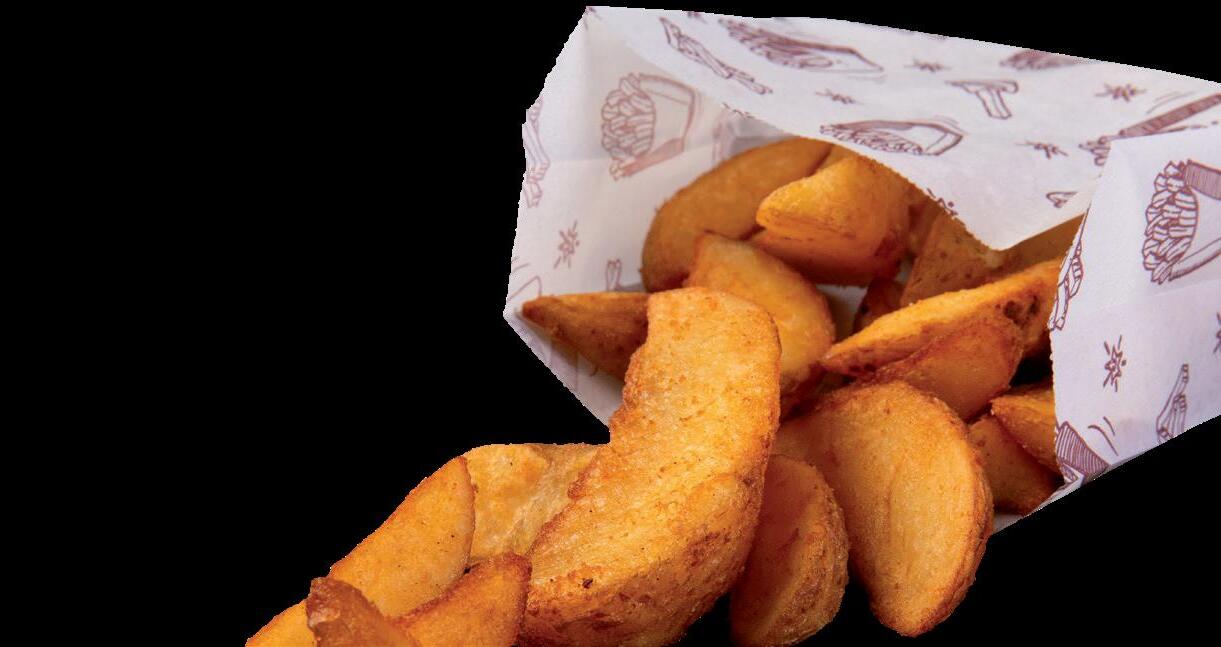


In the last eight years, Ampersand has been the go-to for quick coffees, breakfast meetings, family lunches and date night dinners.

ith its high ceilings, neutral colour aesthetic and open seating, the space moulds to fit the feel of its environment. And tying it all together, is the music.
“The really special part of Ampersand is that when you’re there, you’re in a little bubble away from the rest of the world,” said co-founder Amanda Rogers.
We change the music to fit the world outside. So, on a rainy day, you get to huddle up inside with moody tunes. When it’s bright and sunny, the playlist will change to give you a subtle dopamine hit.
Having the right vibe is the priority for Rogers and the team, and it’s what has cemented them as an Ōrākei staple among the locals. They’re open seven days a week and as Rogers puts it, they are part of the locals’ habits.
“People will often stop by on their walks around the Basin. Many come


here with their laptops to work in a cozy nook, and still others swear by the coffee that Espresso Workshop, our onsi te baristas, create.”
With a variety of customers flowing through the doors, the staff are always looking to match the music to the clientele. This is why it was important for Ampersand Eatery to obtain a music licence through OneMusic, so

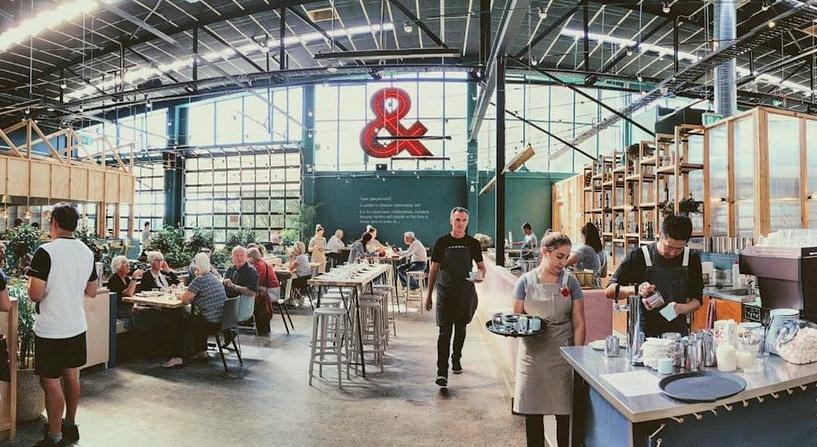
they could serve customers in every aspect of the ambience.
Their relationship with OneMusic began when the team at Espresso Workshop suggested it to them as a young business.
“Getting to know OneMusic over the years, we realised they really cared about the artists and how getting licensed to play music helps them. That was important to us as a business,” said Rogers.
As a OneMusic-licensed venue, the team have the freedom to curate their special ambient playlists with a mix of tunes.
“They’re trained now to gauge the crowd and adjust the music based on those vibes!” said Rogers.
It’s this intuitive team that is the soul of Ampersand. Over the years, they’ve seen staff turnover like any other business. But amidst it are the “solid rocks” who have helped make the Eatery a home.
“We wouldn’t be anywhere without the team,” she said.
“We’re lucky to have people who see customer service as a priority. They are kind, hospitable and courageous no matter what is thrown at them. You can’t teach that.”
She said there now is a symbiotic relationship between staff and customers. Sometimes they even have customers give them ideas on what they would like to have on the menu. And every now and then, those ideas manifest into delicious dishes.
“The customers have been so great to us,” said Rogers.
“They welcomed us into the Ōrākei community with open arms and support, and we want to give back in whatever way we can.
At the end of the day, it’s all about building trust with your customers. We want to make it work for them. And whether that is through food, service, or music, we are there for them.





Chefs from across the country will gather in Auckland in late June for the NZ Chefs Championships 2025 at Fine Food NZ.
Z Chefs Championships
Chief Judge Geoff Scott said these competitions are about much more than medals.
“It’s an opportunity to gain invaluable experience, challenge yourself, and connect with like-minded peers who share your passion for the culinary arts,” said Scott.
He added that the judging panel was committed to ensuring every competitor is treated fairly and respectfully as they showcase their talent and strive for success.
“I am thrilled to collaborate with a distinguished panel of judges, including both national and internationally Worldchefs-certified experts, who bring a wealth of experience to this important role.”
This year’s Championships will showcase the diverse variety of culinary talent in New Zealand. Entrants for the NZ Chef of the Year have reflected all corners of the industry.
Udith Hewa, Executive Chef for Creative Catering and Awapuni Function Centre in Palmerston North, will compete for the gold. Hewa trained at the International Hotel School in Sri Lanka and before working across the region, as well as in Oman and Bahrain. He is also the former Executive Chef for the New Zealand Defence Force Base in Ohakea.
New Zealand chef Hugh CollierBaker will fly back home to compete at this year’s events. Collier-Baker has worked predominantly in Europe over the past decade, having had roles as Chef de Partie at 108 Restaurant in Copenhagen and Restaurant Olo in Helsinki. He is currently Assistant Head Chef at Speilsalen in Trodheim, Norway.
Collier-Baker believed the Chef of the Year competition was important, as it helped to showcase the skills and creativity of chefs and bring recognition not just to the individual but also to the establishment they represent.
“The competition helps raise
It’s an opportunity to gain invaluable experience, challenge yourself, and connect with like-minded peers who share your passion for the culinary arts.
standards and push boundaries, encouraging new and exciting ideas for future competitors. It also builds relationships within the hospitality sector, connecting like-minded people and creating a strong sense of community and unity.”
Sam Gradowski-Smith will also take part in this year’s event, following his recent time at Bocuse d’Or in Lyon, France. Gradowski-Smith won NZ Emerging Chef of the Year in 2023, and now works at Lilan in Grey Lynn where he assists the head chef.
Gradowski-Smith said his career objective has been to gain experience working in modern kitchen environments, with a particular focus on bistro and upmarket dining, and to utilise his experience and drive to contribute to an exciting and fun chef brigade.
For Yazan Demashqyeh, this competition is the perfect opportunity to showcase his skills. Having trained in culinary arts outside of New Zealand, Demashqyeh joined the team at Auckland’s Cordis Hotel as Head Chef in 2023. In 2013, he won a silver medal at the Emirates Culinary Guild for his entry in the beef rump competition.
Chef Andy Tranter will also participate in the 2025 competition. Based in Akaroa, Tranter is Head Chef at Caldera Estate, one of the region’s acclaimed vineyards. Throughout his illustrious career, Tranter has worked
for a variety of establishments, such as Pescatore in Christchurch, where he was Sous Chef, and Crockett Restaurant and Bar, where he was head chef.
Tranter spent time as a young chef in Australia for a number of years, specifically in Queensland and Melbourne, before working for Restaurant Story, a Michelin-Starred restaurant, in London.
Monique Garnett trained at CPIT in Christchurch. She graduated with a Bachelor of Health Science in Occupational and Environmental Health, and has worked as an environmental officer for the Palmerston North City Council.
Throughout her culinary career, she has worked at Charley Noble in Wellington and The George and Tequila Mockingbird in Christchurch.
Worldchefs Continental Director for the Pacific Rim, Peter Wright, said he was excited to support this year’s NZ Chefs Championships.
“It promises to be another spectacular event that draws attention to the incredible talent and creativity of New Zealand’s culinary community,” said Wright.
“The addition of the two new ‘Taste of New Zealand’ classes is an excellent initiative, showcasing the unique flavours of the region.”
The NZ Chefs Championships will take place from the 29th of June to the 1st of July 2025.








Co-founded by Sue Stockwell and Jenny McDonald, Dunedin Craft Distillers is the first distillery in New Zealand and one of only a handful worldwide to produce botanical spirits from surplus bakery products that would otherwise go to landfill.

Stockwell has spent the majority of her long career striving for excellence in the food service offered in student halls of residence. She has also spent years teaching food service management at the University of Otago, giving her an extensive background in the sector.
At the same time, McDonald graduated in medicine and completed a PhD in computer science. She has worked in video production, digital map making, and educational technology and spent nearly 20 years trying to be a good academic.
However, both women share a cando attitude and hate anything going to waste.
The business idea for Dunedin Craft Distillers came about in 2019 following a discussion among friends about how

much bakery waste goes to the local landfill each year. COVID-19 provided an opportunity to evaluate the concept, and the duo started trading in early 2021.
Initially, they could only process 25 kg of bakery surplus at a time, but they have since increased production from around 10L of finished spirits per batch to around 100L.
The growth in the craft spirits sector, especially gin, provided a ready market for Dunedin Craft Distillers’ upcycled alcohol, but the duo soon realised that the market had become increasingly crowded.
“It is challenging to profit even without the added complexity of producing your alcohol. Most distillers avoid this and buy industrially manufactured ethanol and then rectify
Continued on page 34.



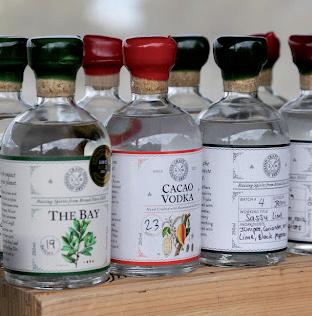





We enter one or two of our spirits each year into international competitions to verify that our upcycled products can hold their own against the competition. Gold at the London Spirits Competition for our Bay Gin, Silver in London, and Singapore for our Dunedin Dry are highlights.
Continued from page 33.
it for white spirits, liqueurs, etc,” said Stockwell and McDonald.
“We enter one or two of our spirits each year into international competitions to verify that our upcycled products can hold their own against the competition. Gold at the London Spirits Competition for our Bay Gin, Silver in London, and Singapore for our Dunedin Dry are highlights.”
Dunedin Craft Distillers offers a small range of spirits and liqueurs. All products have been made from their unique base alcohol, brewed and distilled in-house from surplus bakery products.
Currently, they process up to 200 kg of local bakery waste each week and collaborate with the local food rescue service, Kiwi Harvest, to ensure they
don’t take surplus that can be better used as food.
“We’d love to see more distillers take up the challenge of producing spirits from food waste. Alcohol is nice to have, but it’s not necessary for life. We’ve demonstrated that premium spirits can be produced from scratch from bakery waste.”
They also offer ‘Bread to Bottle’ tours and have recently introduced workshops where visitors can distill their botanical spirit using bread-based alcohol.
Dunedin Craft Distillers will launch a distinct Dunedin spirit this year, crafted from scratch in the Otago Harbour Basin premises.







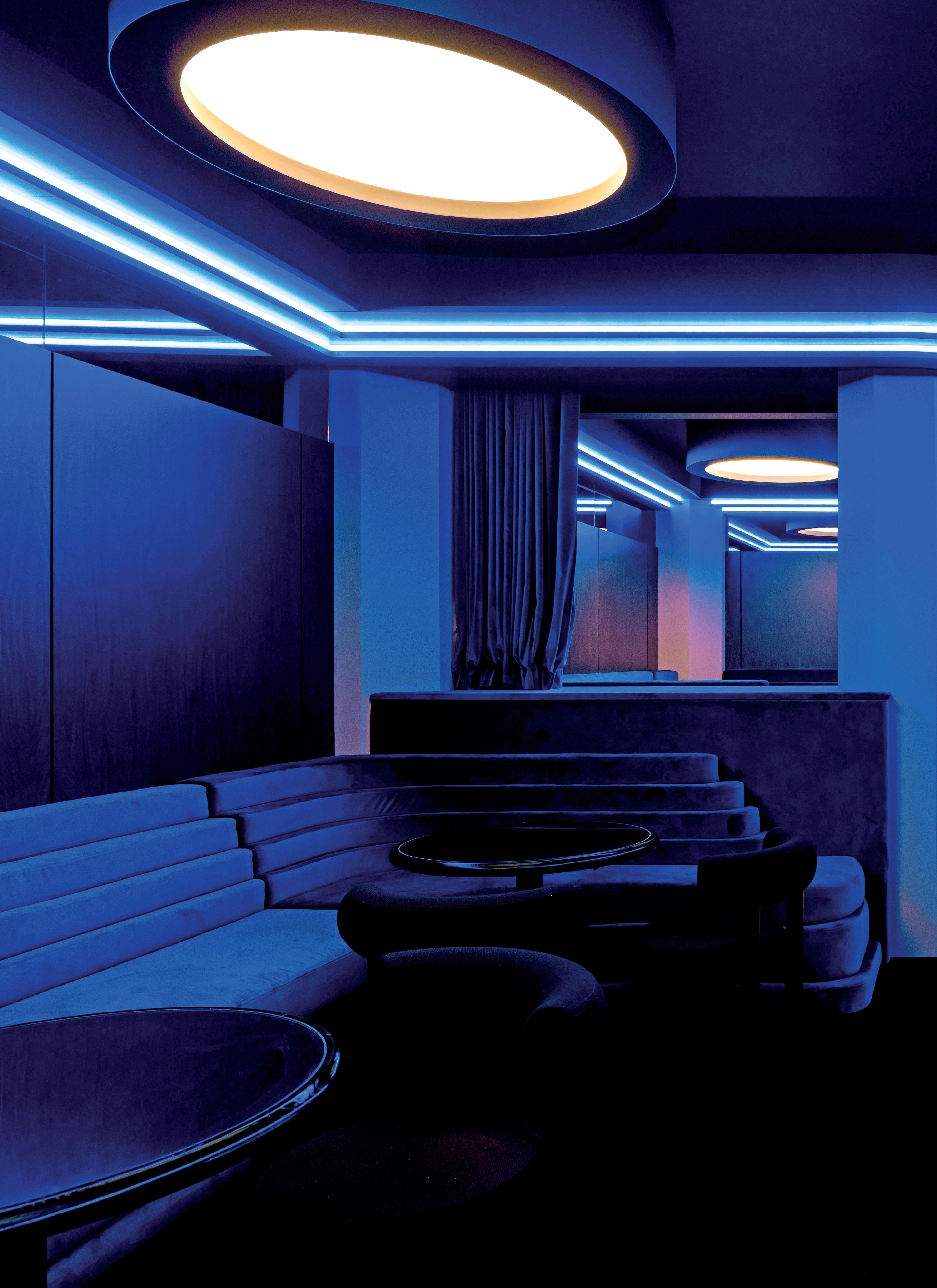
In its 39th year, the prestigious Dulux Colour Awards continues to celebrate excellence in the creative use of colour across architecture and interior design. This year’s competition saw nearly 500 entries submitted from New Zealand and Australia, with a panel of six respected industry judges narrowing the field to just 88 exceptional finalists across eight categories.
The use of colour at Quinn Bar is a perfect example of how thoughtful, intentional design can completely transform a space.






Continued from page 37.
Among the standout projects is a newly opened cocktail bar in Auckland’s CBD, Quinn Bar, an intimate, design-led space brought to life by the talented team at Izzard Design. The bar has been recognised as a finalist in the Commercial Interior – Public and Hospitality category.
Quinn Bar was conceived as a sensory oasis in the heart of the city, a venue where mood, lighting, and colour converge to create a rich, evolving experience. At the heart of its design is Dulux Kenepuru Sound, a deep and vibrant blue that sets the tone both literally and atmospherically. Chosen for its tranquil yet dramatic qualities, Kenepuru Sound envelops the space, creating a calming backdrop that
beautifully contrasts with the sleek stainless steel finishes of the cocktail bar.
This moody blue isn’t just for show. It plays a functional role in shaping the guest experience. Integrated RGB lighting gently shifts throughout the evening, transitioning the space from cool to warm tones, subtly changing the energy and reflecting the evolving rhythm of the night. The result is a space that feels immersive and dynamic, inviting guests to lose themselves in its ever-changing atmosphere.
Complementing the bold blue is Dulux Rakaia, used on the bar’s art deco-inspired hexagonal columns. This grounding hue acts as a counterpoint to Kenepuru Sound, adding depth and structural elegance

while responding to the ambient lighting with a chameleon-like quality.
“The use of colour at Quinn Bar is a perfect example of how thoughtful, intentional design can completely transform a space,” says Davina Harper, Dulux Colour Specialist.
“New Zealand projects like this are embracing colour with a new level of confidence, and it’s inspiring to see.”
Winners of the Dulux Colour Awards 2025 will be announced at an exclusive event at the National Gallery of Victoria, Melbourne, in May.

New Zealand projects like this are embracing colour with a new level of confidence, and it’s inspiring to see.








Marisa Bidois CEO, Restaurant Association of New Zealand
The Restaurant Association is celebrating the Government’s $13.5 million investment in global marketing of New Zealand as an international destination of choice, while calling for food experiences to be at the heart of that storytelling.
Today’s announcement means more than $31 million has been invested in international marketing, boosting regional
tourism and attracting business events in the past few months alone,” said Marisa Bidois, CEO of the Restaurant Association of New Zealand.
“We know that funding for visitor attraction is an investment in the economic future of New Zealand that consistently generates a significant return. Overseas visitor expenditure grew to $16.9 billion for the year ending March 2024 — an increase of $6.3 billion or nearly 60 per cent on the year prior.
“Attracting international visitors has a significant impact on the hospitality sector. While domestic tourism is our bread and butter, international tourism is what helps our sector grow and become more resilient.”
The Restaurant Association is urging Tourism New Zealand to ensure that this new investment includes a strong focus on New Zealand’s food and dining experiences.
“We have a rich and unique food story that deserves to be told,” continued Bidois. “From award-winning restaurants to fresh seafood on the coast and vibrant street food markets — our hospitality sector offers some of the most memorable and meaningful experiences a visitor can have.
“Our restaurants, cafés and food producers are not just a service, they are an expression of our culture, our innovation, and our manaakitanga. We’d love to see that reflected more boldly in how we promote Aotearoa to the world.”
Bidois emphasised that the hospitality sector is a key contributor to people and place: “We bring economic diversity, generate jobs, and contribute to regional prosperity, while showcasing New Zealand’s cultural richness and timeless experiences. Hospitality fosters pride and social connectivity both locally and globally.”


For years, food waste has been seen as part of the deal when running a hospitality business. But in an industry where margins are tight a nd customers are becoming more conscious of sustainability, that mindset is shifting.

Iain Lees-Galloway GENERAL MANAGER, AFRA
More and more operators are seeing food waste not as an inevitable cost, but as a genuine opportunity, and one that can cut expenses, improve customer satisfaction, and strengthen long-term resilience.
In fact, reducing food waste is one of the most profitable sustainability moves a hospitality business can make. Global research by Food Waste Champions 12.3 shows that for every $1 invested in food waste reduction, the average return is more than $7. That’s a strong case for action.
The scale of the problem is also hard to ignore. It’s commonly acknowledged that a third of the world’s food is wasted across the supply chain. Here in New Zealand, hospitality contributes

around 12 percent of our total food waste. That’s too much good food and too much money to be throwing away. Start at the Plate
Cutting down food waste doesn’t mean cutting corners. In fact, it can improve both your service and your bottom line.
Let’s start with what’s on the plate. A study from the University of Otago found that 34 percent of food waste in hospitality comes from uneaten customer leftovers. That’s food you’ve paid for, prepped, cooked, and then had to throw away.
A quick review of portion sizes can reveal some easy wins, especially for popular or frequently returned dishes. Offering smaller or flexible portions gives diners more control and can help

reduce plate waste without sacrificing satisfaction.
Short-run specials are another great way to use ingredients nearing their expiry date. Daily checks of your fridge and pantry, along with clear labelling and FIFO (first in, first out) practices, can go a long way in reducing spoilage. And don’t forget your team. When kitchen and front-of-house staff are trained to spot and reduce waste, they can make a big difference. Some venues are even getting customers involved, promoting takeaway options or celebrating “imperfect” produce as a menu feature, not a flaw.
Work Together: From Suppliers to Food Rescue
Reducing waste doesn’t stop at the kitchen door. Working with others across the supply chain is where real impact happens.
Start by having conversations with your suppliers. Many growers and wholesalers have gluts of seasonal produce or items that don’t meet cosmetic standards, but are still perfectly fresh and delicious, especially for soups, smoothies, sauces, or mashes, and they often come at a lower cost.
Partnering with food rescue organisations is another powerful step. Food rescue is all about collecting, sorting, and redistributing good surplus food to people who need it. Across the motu, the Aotearoa Food Rescue Alliance (AFRA) has 36 members, working with growers, manufacturers, supermarkets, and hospitality businesses to keep edible food out of landfill and into the hands of communities doing it tough.
These organisations can help with logistics, collecting your surplus for you, and many can assist with data for sustainability reporting. The earlier
you let them know about surplus or changing inventory, the faster they can respond, keeping more food in circulation.
What’s Next for Waste Reduction in Hospitality?
Momentum is building. Countries like France and the UK now have mandatory food waste reporting and reduction targets, and carbon accounting includes food waste emissions. New Zealand may not be far behind.
Consumers are pushing for change, too. AFRA research shows 83 percent of New Zealanders believe food businesses should do more to stop edible food from going to landfill.
Technology is helping. Apps like FoodPrint let businesses offer items near sell-by-date at a discount, saving food and recouping costs. AI-driven forecasting, dynamic pricing, and smarter inventory tools are becoming more accessible.
But at the heart of it all are the basics: know your stock, engage your team, and build strong supply chain relationships. Whether it’s adjusting portions, tightening systems, or working with food rescue, the opportunity is real, and the impact is too.
As we say at AFRA: let’s work together to feed people, not landfill.






For many in the hospitality industry, food waste is an unavoidable by-product of doing business. But for Sarah Hughes, Sector Action Plan Project Coordinator at End Food Waste Australia, that mindset is not only outdated – it’s expensive.

Sarah Hughes ACTION PLAN PROJECT COORDINATOR, END FOOD WASTE AUSTRALIA
Edible food makes up around 67 percent of waste from the hospitality sector in Australia,” said Hughes.
“When businesses throw that away, they’re not just losing the cost of ingredients – they’re wasting labour, overheads, disposal fees, and potential sales.”
Her message is clear: reducing food waste is good for the environment and good for business. The first step is understanding what goes into the bin.
Start with Measurement - Hughes recommends businesses begin by tracking their waste. It doesn’t need to be complex – a simple method of weighing or recording food waste at the end of each day for a week can help build a baseline. Where possible,
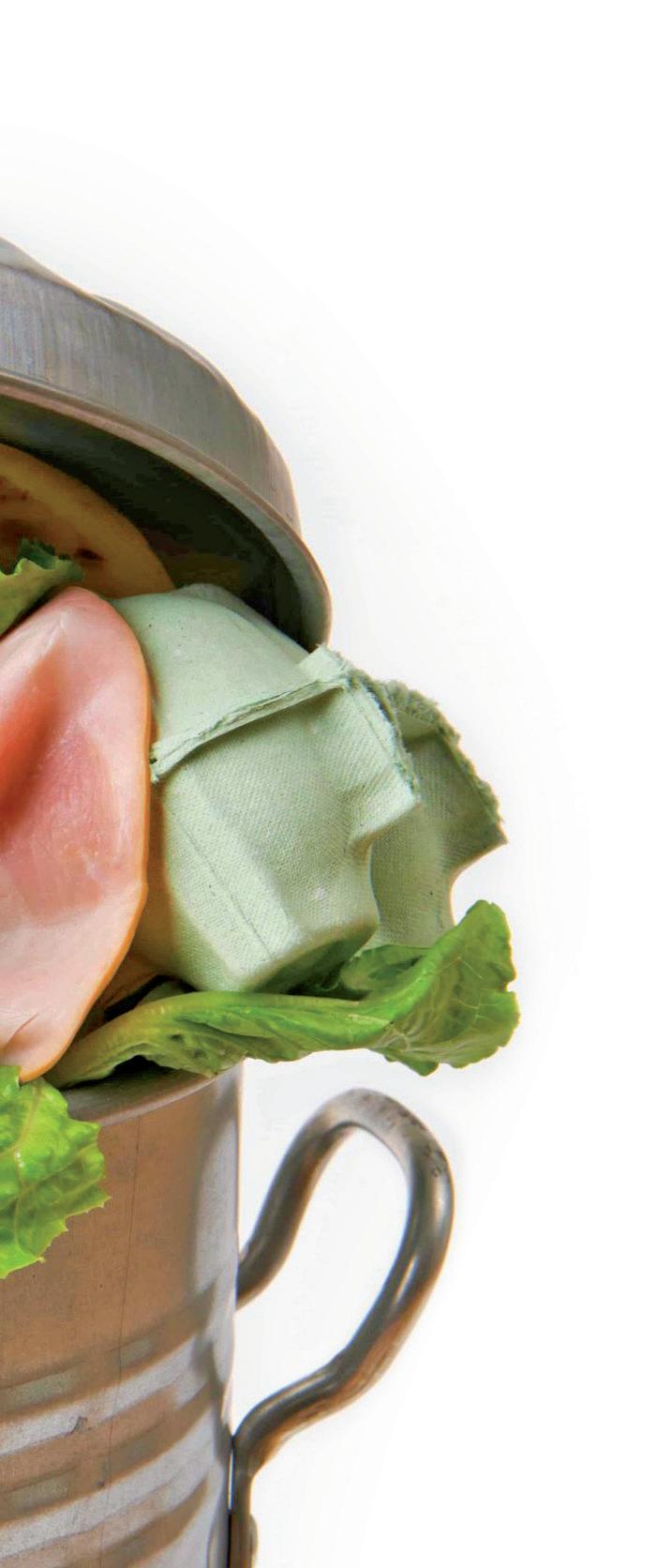
she encourages operators to separate kitchen waste from plate waste to understand where losses are occurring.
“Even monitoring what’s being discarded can reduce waste by up to 30 percent. Once teams can see what they’re wasting, they can identify where change is needed.”
It’s not just about collecting data –communication is key. Hughes noted that staff may feel like they are being watched when asked to track waste, so they must understand the ‘why’. Involving the whole team, setting goals, and celebrating wins helps create a positive and proactive culture around waste reduction.
Front-of-house staff also have an essential role to play. As the customer touchpoint, they should be equipped
to explain any menu changes or sustainable initiatives.
“Customers are increasingly supportive of businesses making sustainable choices,” said Hughes.
“And they appreciate being informed.”
To help businesses get started, End Food Waste Australia has developed two sector-specific action plans:
• Catering Sector Action Plan
• Café Sector Action Plan
Technology can streamline managing food waste, especially in busy kitchens. Hughes points to a growing number of systems that assist with weighing and tracking waste, often with builtin analytics to highlight trends and hotspots.
“These tools can make life easier, but they require staff training to be effective,” she noted.
“It’s also worth investing in accurate forecasting systems and smarter inventory management to prevent waste before it happens.”
Hughes highlights smart menu design as a powerful way to reduce waste without compromising customer experience.
“Smaller, more flexible menus mean fewer ingredients to manage, which leads to less spoilage. Using different parts of the same ingredient across dishes is also a simple but effective strategy.”
She also suggests offering smaller portion sizes or optional sides, particularly as portion size is a major driver of plate waste.
“Standardising portions and listening to feedback about uneaten food can go a long way,” she said.
“But it must be paired with good customer communication to ensure the dining experience isn’t affected.”
Reducing food waste isn’t something hospitality businesses have to tackle alone. Working together across the supply chain, Hughes encourages building strong relationships with suppliers and food rescue organisations.
“Letting your suppliers know you’re open to receiving short-dated stock or cosmetically damaged packaging can prevent perfectly good food from going to waste,” she explained.
Understanding what local charities can accept – and how collections can be managed – is also crucial. Sometimes, simply adjusting packaging sizes with suppliers can reduce unnecessary overordering.
“Bulk buying might seem economical, but if it leads to waste, it’s not saving money.”
Looking to the future, Hughes sees food waste reduction becoming embedded in everyday hospitality operations and hospitality training.
“There’s growing momentum for systemic change. Waste reduction needs to be built into menu design, food handling, and even workplace culture.”
Policy is also starting to play a role. In New South Wales, new FOGO (Food Organics, Garden Organics) mandates will soon require some food-producing businesses to separate food waste. While the policy doesn’t directly prevent waste, it often sparks behavioural change.
“For businesses already facing high operational demands, the idea of becoming more sustainable can feel overwhelming,” Hughes acknowledged.
“But small, simple changes often make the biggest difference. It’s about identifying the low-hanging fruit – those easy wins – and building from there.”







